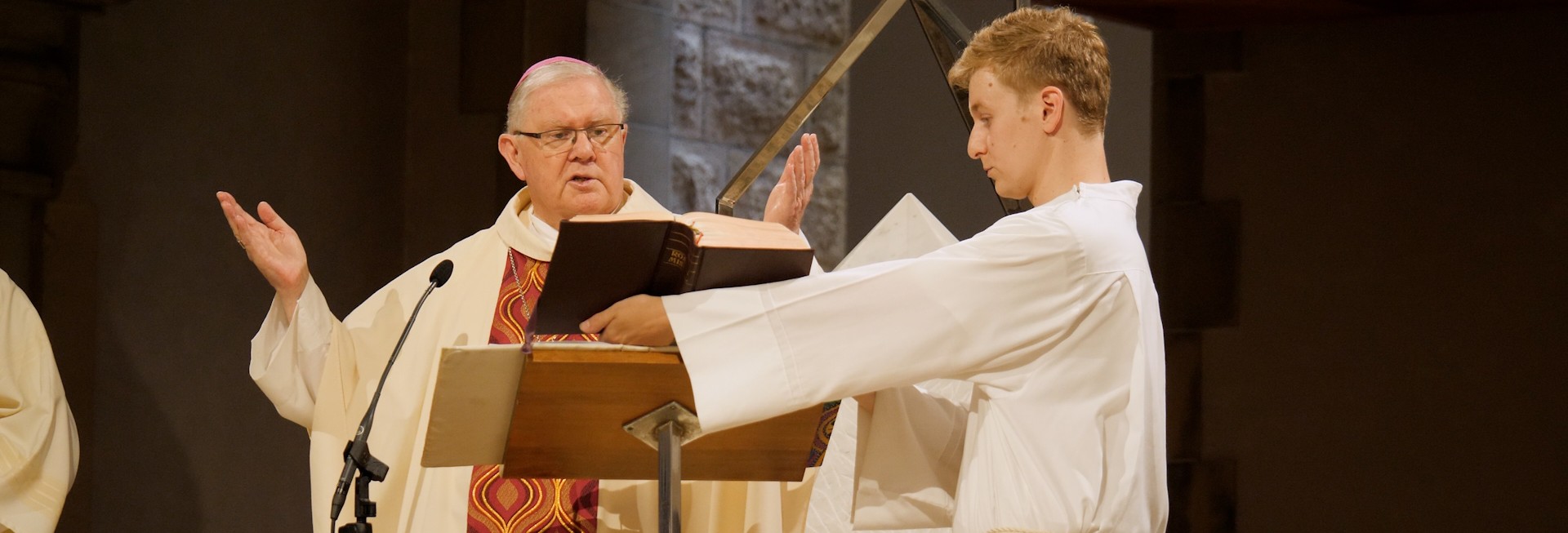The Gloria and the Opening Prayer
National Liturgical Council

The Gloria
The Gloria is a song of praise based on the hymn of the angels in Luke’s Christmas story.
It was first used in the Pope’s Christmas Mass in Rome (sixth century), and then only sung at Masses when the bishop presided.
By the eleventh century, the Gloria was being sung regularly except in Advent and Lent, as happens today.
The Gloria was always meant to be a song of the assembly, but it became more elaborate over time, until only choirs were singing it. Since Vatican II has restored the importance of all people being actively involved in the liturgy, the Gloria has been rewritten to be more easily sung by the assembly.
The Gloria is now a regular part of the mass and a song of praise, so parishes should know one or two sung versions very well, maybe with choir and assembly alternating. However, the General Instruction says, ‘If not sung, it is to be recited either by all together or by two parts of the congregation responding one to the other.’ (GIRM 53)
In Ordinary Time this could well be an option, but the Gloria should definitely be sung on major feasts and during Christmas and Easter.
Opening Prayer
Following the Gloria we have the Opening Prayer. This and the Entrance Song, are the two most important parts of the Introductory Rites.
The Opening Prayer has been part of the Roman liturgies since the fifth century at least. It was prayed following the Entrance Procession. The one presiding would first invite the people to pray. They would do this in silence. Then the presider would gather or collect their prayers into a summary statement and the people would give their Amen. That’s why the Opening Prayer is so general, and why it was once called the Collect – collecting up the silent prayers of all present.
Over time, this simple format got cluttered with additional prayers and the chance for the people to pray in silence got lost. The revised Order of Mass has now returned to the more ancient form allowing for people to pray in silence after the priest’s invitation “Let us pray”.
The General Instruction has this to say: "All, together with the priest, observe a brief silence so that they may be conscious of the fact that they are in God’s presence and may formulate their petitions in their hearts and minds. The priest says the prayer which is customarily known as the Collect and through which the character of the celebration is expressed" (GIRM 54). The people make the prayer their own with the acclamation, ‘Amen’.
Only one Opening Prayer is ever to be prayed at any Mass. It may be sung or spoken. However, if the priest is reciting this prayer, there should not be any background music. (GIRM 12)
Liturgists generally agree that the Introductory Rites have grown rather long over time. Their purpose is simply to help the people gather as the Body of Christ, and to prepare them to listen to God’s word and celebrate the Eucharist.
Care should therefore be taken in preparing these elements so that they truly engage those gathered, since the assembly of the baptised is the first instance in which Christ is present in the liturgy.
This article was originally published in Let’s Walk Through The Mass. © Diocese of Parramatta. 1999, 2000, 2007. Reprinted with permission.
